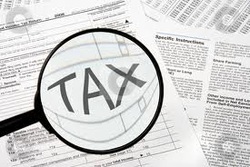How CRA Reviews Your Taxes

The Canada Revenue Agency (CRA) today posted a note on its web site, explaining its personal tax review procedures.
The CRA wants to make sure you are paying the correct amount of taxes—not too much and not too little.
Each year, more taxpayers file their income tax and benefit returns online using NETFILE or EFILE. Although electronic filers do not have to send their receipts to the CRA, they should make sure to keep the receipts and relevant documents that support their claims. When the CRA reviews returns, it will ask taxpayers for receipts or specific supporting documentation.
Completing your individual return can sometimes be complex. The CRA does several reviews to make sure that income, deductions, and credits are accurately reported and filed. These reviews promote taxpayer education by identifying areas of misunderstanding.
Four review programs
There are four main review programs:
Under the Pre-assessment Review Program, the CRA electronically analyzes returns to identify situations that represent a higher risk of tax loss. Various deductions and credits are reviewed, and contact with the taxpayer may be made by mail before a notice of assessment is issued.
After a notice of assessment is issued, returns go through the Processing Review Program where they are reviewed to make sure that certain claimed deductions and credits are accurate and are supported by appropriate documentation. The CRA may also ask a taxpayer for proof of payment. In specific instances, a taxpayer may be asked to send more information to support his or her claim, such as cancelled cheques or bank statements. If a review identifies an error, the taxpayer will receive a new notice of assessment.
The Matching Program makes sure that information slips filed by a third party, such as an employer or a bank, correspond to the information the taxpayer reported. Payers and financial institutions submit to the CRA a copy of all slips they issue to taxpayers, which the CRA cross-references with returns after notices of assessment are issued.
All returns are matched to third-party information slips. If there is a discrepancy between the income reported by a taxpayer and the income reported by a third party, the CRA may contact the taxpayer or a representative by mail or telephone for clarification. If the CRA determines that an adjustment is required after completing the review, it will send a new notice of assessment to the taxpayer.
The RRSP Excess Contribution Review Program makes sure that taxpayer records are correct and that any required T1-OVP, Individual Tax Return for RRSP Excess Contributions forms are filed by the taxpayer. Through this program, the CRA identifies taxpayers with potential registered retirement savings plan (RRSP) excess contributions and communicates with them to review their situation.
Source: http://www.cra-arc.gc.ca
The CRA wants to make sure you are paying the correct amount of taxes—not too much and not too little.
Each year, more taxpayers file their income tax and benefit returns online using NETFILE or EFILE. Although electronic filers do not have to send their receipts to the CRA, they should make sure to keep the receipts and relevant documents that support their claims. When the CRA reviews returns, it will ask taxpayers for receipts or specific supporting documentation.
Completing your individual return can sometimes be complex. The CRA does several reviews to make sure that income, deductions, and credits are accurately reported and filed. These reviews promote taxpayer education by identifying areas of misunderstanding.
Four review programs
There are four main review programs:
- Pre-assessment Review Program
- Processing Review Program
- Matching Program
- RRSP Excess Contribution Review Program
Under the Pre-assessment Review Program, the CRA electronically analyzes returns to identify situations that represent a higher risk of tax loss. Various deductions and credits are reviewed, and contact with the taxpayer may be made by mail before a notice of assessment is issued.
After a notice of assessment is issued, returns go through the Processing Review Program where they are reviewed to make sure that certain claimed deductions and credits are accurate and are supported by appropriate documentation. The CRA may also ask a taxpayer for proof of payment. In specific instances, a taxpayer may be asked to send more information to support his or her claim, such as cancelled cheques or bank statements. If a review identifies an error, the taxpayer will receive a new notice of assessment.
The Matching Program makes sure that information slips filed by a third party, such as an employer or a bank, correspond to the information the taxpayer reported. Payers and financial institutions submit to the CRA a copy of all slips they issue to taxpayers, which the CRA cross-references with returns after notices of assessment are issued.
All returns are matched to third-party information slips. If there is a discrepancy between the income reported by a taxpayer and the income reported by a third party, the CRA may contact the taxpayer or a representative by mail or telephone for clarification. If the CRA determines that an adjustment is required after completing the review, it will send a new notice of assessment to the taxpayer.
The RRSP Excess Contribution Review Program makes sure that taxpayer records are correct and that any required T1-OVP, Individual Tax Return for RRSP Excess Contributions forms are filed by the taxpayer. Through this program, the CRA identifies taxpayers with potential registered retirement savings plan (RRSP) excess contributions and communicates with them to review their situation.
Source: http://www.cra-arc.gc.ca

